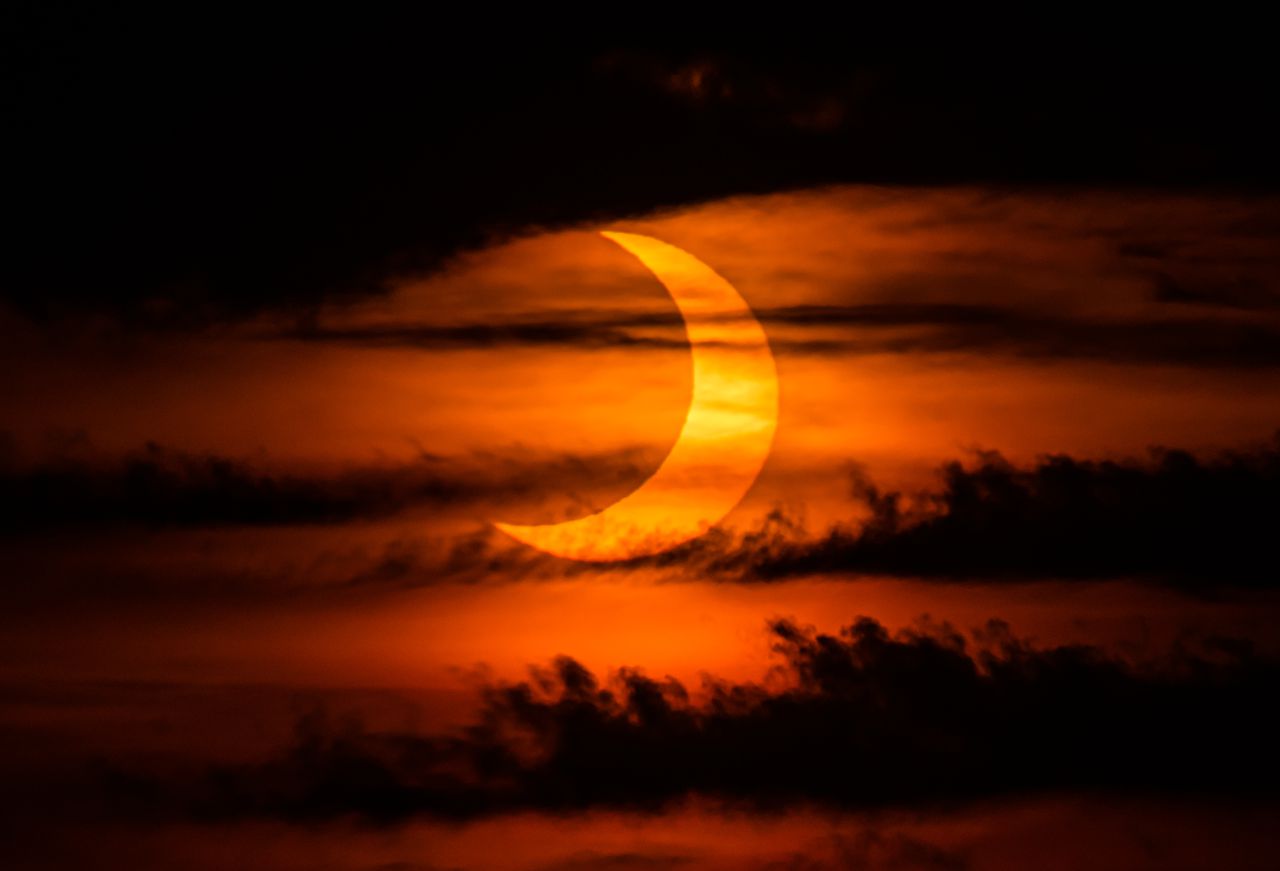Annular solar eclipse live stream (10/14): How to watch watch âring of fireâ
The rare “ring of fire” eclipse of the sun will take place Saturday Oct. 14, and it will be live streamed NASA’s YouTube channel.
The stream will feature conversations with scientists and telescope views from across the country.
Unlike a total solar eclipse, the moon doesn’t completely cover the sun during a ring of fire eclipse. When the moon lines up between Earth and the sun, it leaves a bright, blazing border.
RELATED: What time can I see the eclipse?
Saturday’s path: Oregon, Nevada, Utah, New Mexico and Texas in the U.S., with a sliver of California, Arizona and Colorado. Next: Mexico’s Yucatan Peninsula, Belize, Honduras, Nicaragua, Costa Rica, Panama, Colombia and Brazil. Much of the rest of the Western Hemisphere gets a partial eclipse.
A solar eclipse occurs when the moon passes between the sun and the Earth while it as its farthest point from the Earth. The moon is farther away from than usual for this eclipse, appearing smaller than the sun and not completely covering it, creating the “ring of fire” effect.
RELATED: James Spann’s tips for fans headed to Alabama game during eclipse
Saturday’s annular solar eclipse is different from a total eclipse, the next of which is expected to occur in April and will be the last opportunity for people in the states to catch a glimpse of a ring of fire for a number of years.
What time is the eclipse?
The annular solar eclipse begins at 11:13 a.m. (12:13 p.m. ET) and pass from Oregon to the Gulf Coast, appearing in Nevada, Utah and New Mexico. The event will also be visible in parts of California, Idaho, Colorado and Arizona. It will end in the U.S. at 12:03 p.m. CT (1:03 p.m. ET).
Where to see the eclipse?
The eclipse also will cross Mexico, Belize, Honduras, Panama and Colombia before ending off South America’s Atlantic coast at Natal, Brazil.
It’s a prelude to the total solar eclipse that will sweep across Mexico, the eastern half of the U.S. and Canada, in six months.
What is an eclipse?
An eclipse takes place when the moon passes between Earth and the sun, but the moon is at the furthest point away from Earth in its orbit. According to NASA, when the moon is further away, it doesn’t completely cover the sun, creating the “ring of fire.”
Forty-eight states will be able to view part of the eclipse.
Can I look directly at an eclipse?
The short answer is no.
According to NASA, it is never safe to at the sun during an annular eclipse without special eye protection. Doing so, the agency said, could permanently damage your eyes.
Do sunglasses work to watch an eclipse?
Again, the answer is no, per NASA.
Sunglasses are not eclipse glasses.
“Safe solar viewers are thousands of times darker and ought to comply with the ISO 12312-2 international standard,” the space agency shares.
To watch an annular solar eclipse, you need approved solar viewing glasses (AKA eclipse glasses) or a solar viewer.
Where can I get eclipse glasses?
The American Astronomical Society has a list of approved solar-eclipse glasses suppliers.
ISO-approved glasses must meet the following requirements, per space.com,
- No more than 0.00032 percent of sunlight may be transmitted through filters.
- Filters can’t have scratches, bubbles or dents.
- Handheld viewers must cover both eyes
- Product must be labeled with manufacturer name, safe-use instructions and proper danger warnings.
Can I use a camera, binoculars or telescope?
The answer, once again, is no.
“The concentrated solar rays will burn through the filter and cause serious eye injury,” NASA said.
In fact, you can’t even use a camera, telescope, binoculars even if you are wearing eclipse glasses or using a solar viewer.
The Associated Press contributed to this report.
